
Centurion Mk.13 | |
|---|---|
| Pays | UK |
| Catégorie | Véhicules blindés |
| Type | Char |
Galerie photo sur un Centurion Mk.13, Le Centurion est un char d’assaut de l’armée britannique de l’après-guerre. Ce char est considéré par les spécialistes comme l’un des tout premiers chars d’assaut britanniques en qualité. Son développements a débuté durant la Seconde Guerre mondiale, n’étant pas arrivé assez tôt sur le terrain il n’a pas pris part aux combats. Par contre il a été engagé pendant la guerre de Corée, où il semble avoir surclassé tant les chars américains que ceux des soviétiques.
Il a été l’un des chars les plus répandus de part le monde,étant en service dans de nombreuses armées et a connu une longévité hors du commun étant encore en service actif dans les années 90 et même en 2000 pour certaines de ses versions dérivées. Son successeur sera le modèle Chieftain.
Source: Char Centurion sur Wikipedia
| Centurion Mk.13 – Walk Around | |
|---|---|
| Photographer | Unknow |
| Localisation | Unknow |
| Photos | 122 |
Spécifications techniques Équipage : 4 hommes (commandant, tireur, chargeur, conducteur) Longueur : 7,82 m Largeur : 4,30 m Hauteur : 3,01 m Masse au combat : 43,182 tonnes Blindage : 17 à 127 mm Armement principal : 1 canon – successivement : Ordnance QF 17 pounder (76 mm) Ordnance QF 20 pounder (84 mm) Royal Ordnance L7 (105 mm) Armement secondaire : 1 mitrailleuse Browning 1919 de 7,62 mm Moteur : Rolls-Royce Meteor 650 ch (485 kW) Suspension : Horstmann Vitesse sur route : 35 km/h Puissance massique : 15,05 ch/t Autonomie : 192 km
See also:
The Ultimate Centurion Variant
The Centurion Mk.13, formally known as the FV4017, represents the final major production standard of the legendary British post-war tank. It was not built from scratch but was an upgrade package applied to existing Centurion Mk.10 tanks, incorporating all the major firepower and protection improvements developed throughout the Centurion’s long career.
The Centurion series is often regarded as the world’s first true Main Battle Tank (MBT), effectively combining the mobility of a cruiser tank with the armor protection of an infantry tank. The Mk.13 version brought this design to its peak service potential for the British Army.
Key Upgrades and Features
The Mk.13 designation primarily denoted the integration of several key systems onto the Mk.10 chassis:
- Main Armament: The powerful 105 mm L7A1 rifled gun, a weapon that became the standard main armament for most Western MBTs during the Cold War.
- Ranging Gun: The addition of a .50 cal (12.7 mm) ranging machine gun co-axially mounted with the main gun. This allowed the gunner to accurately determine the range to the target by observing where the tracer rounds hit before firing the expensive 105 mm round.
- Infra-Red Equipment: The integration of Infra-Red (IR) night fighting and driving equipment, including a large IR searchlight mounted on the mantlet, providing a crucial night-fighting capability.
- Appliqué Armor: It retained the substantial base armor of the Mk.10, which included additional appliqué armor welded to the glacis plate (hull front) for increased protection against modern anti-tank threats.
General Specifications (Representative of Mk.10/13)
| Category | Detail |
|---|---|
| Mass | Approx. 52 tonnes |
| Crew | 4 (Commander, Gunner, Loader, Driver) |
| Primary Gun | 105 mm L7A1 Rifled Gun |
| Engine | Rolls-Royce Meteor V12 Petrol Engine (650 hp) |
| Max Road Speed | Approx. 35 km/h (22 mph) |
| Suspension | Horstmann (Coil Spring) |
Legacy
While the British Army replaced the Centurion with the Chieftain MBT starting in the late 1960s, the Centurion Mk.13 was a robust and highly capable tank. Its long operational life and adaptability made it a massive export success, with versions remaining in service with several international armies, like Israel and South Africa, well into the 21st century.
Views : 6316











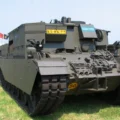
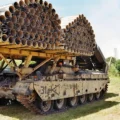
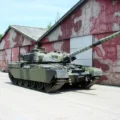
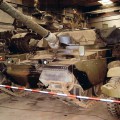
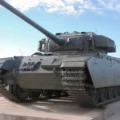
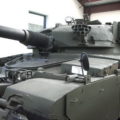
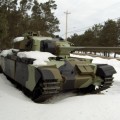
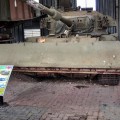

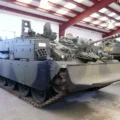
Belles photos, mais c’est une marque 5, pas une marque 13.
Ok, quelles sont les différences ?
Thks (Thks)
53-81228 est un Mk 5 canadien qui a servi avec Lord Strathcona’s Cheval de 1959 jusqu’au milieu des années 1970. Le Canada n’a pas utilisé le Mk 13. Ils n’ont utilisé Mk 5 et mis à niveau certains d’entre eux à Mk 11. Un Mk 11 avait quatre phares (dont deux IR), un raccord pour l’équipement de projecteur IR et un pistolet allant. 53-81228 n’a rien de tout cela.